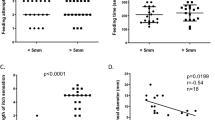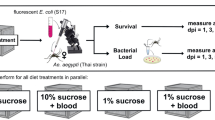Abstract
MOST blood-sucking insects at the time of biting inject into their host an irritant which causes a skin reaction, generally a wheal, more or less conspicuous and itching in relation to the habituation of the host to the particular parasite. Although these injections are of such great importance in the transmission of disease, their purpose has in no ease been properly elucidated hitherto. Macloskie forty years ago suggested that the salivary secretion of mosquitoes prevents the blood from clotting on the way to the stomach, but the work of Nuttall and Shipley (1903), and of Schaudinn (1904), threw doubt on this theory. Cornwall and Patton (1914) proved the presence of an anticoagulin in the salivary glands of several bloodsucking insects and ticks, and also showed that a neutralising coagulant enzyme sometimes existed in the stomach.
This is a preview of subscription content, access via your institution
Access options
Subscribe to this journal
Receive 51 print issues and online access
$199.00 per year
only $3.90 per issue
Buy this article
- Purchase on SpringerLink
- Instant access to full article PDF
Prices may be subject to local taxes which are calculated during checkout
Similar content being viewed by others
Author information
Authors and Affiliations
Rights and permissions
About this article
Cite this article
LLOYD, L. Salivary Secretions of Blood-sucking Insects in Relation to Blood Coagulation. Nature 121, 13 (1928). https://doi.org/10.1038/121013a0
Issue date:
DOI: https://doi.org/10.1038/121013a0



